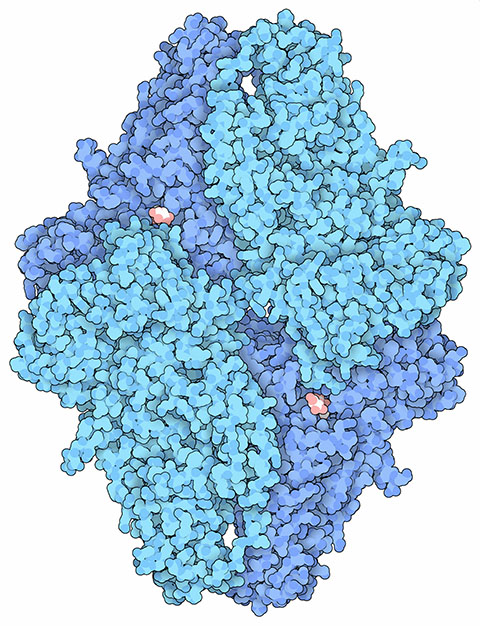Laser-assisted cryoEM method preserves protein structure
Combining mass spectrometry, or MS, and cryogenic electron microscopy, or cryoEM, has long promised high-resolution 3D reconstructions of proteins. Past attempts were limited by low resolution and protein compaction.
Keaton Mertz, Drew Jordahl and colleagues at the University of Wisconsin–Madison and the Morgridge Institute for Research developed a laser-assisted cryoEM method that overcomes these barriers, paving the way for broader MS–cryoEM integration. They published their findings in Molecular & Cellular Proteomics.
The method uses a laser built into transmission electron microscopy grids to liquefy ice particles. When the laser is turned off, proteins rehydrate and regain their native structure before refreezing, producing samples suitable for reconstruction.
Testing with β-galactosidase, the team showed that protein structure was restored without compaction. Results matched those from conventional plunge freezing but with fewer distortions. The researchers expect the technique will enable studies of more complex protein systems.
Enjoy reading ASBMB Today?
Become a member to receive the print edition four times a year and the digital edition monthly.
Learn moreGet the latest from ASBMB Today
Enter your email address, and we’ll send you a weekly email with recent articles, interviews and more.
Latest in Science
Science highlights or most popular articles

Building the blueprint to block HIV
Wesley Sundquist will present his work on the HIV capsid and revolutionary drug, Lenacapavir, at the ASBMB Annual Meeting, March 7–10, in Maryland.

Gut microbes hijack cancer pathway in high-fat diets
Researchers at the Feinstein Institutes for Medical Research found that a high-fat diet increases ammonia-producing bacteria in the gut microbiome of mice, which in turn disrupts TGF-β signaling and promotes colorectal cancer.

Mapping fentanyl’s cellular footprint
Using a new imaging method, researchers at State University of New York at Buffalo traced fentanyl’s effects inside brain immune cells, revealing how the drug alters lipid droplets, pointing to new paths for addiction diagnostics.

Designing life’s building blocks with AI
Tanja Kortemme, a professor at the University of California, San Francisco, will discuss her research using computational biology to engineer proteins at the 2026 ASBMB Annual Meeting.

Cholesterol as a novel biomarker for Fragile X syndrome
Researchers in Quebec identified lower levels of a brain cholesterol metabolite, 24-hydroxycholesterol, in patients with fragile X syndrome, a finding that could provide a simple blood-based biomarker for understanding and managing the condition.

How lipid metabolism shapes sperm development
Researchers at Hokkaido University identify the enzyme behind a key lipid in sperm development. The findings reveal how seminolipids shape sperm formation and may inform future diagnostics and treatments for male infertility.


